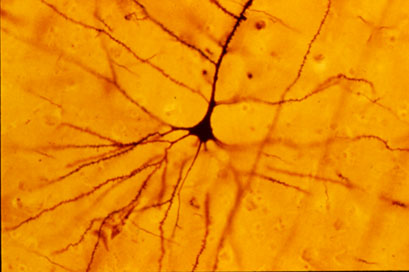
Ohio State Neuroscientists Use Neurolucida to Analyze Brain Cells in Sexually Active Hamsters
Scientists hypothesize that during puberty, experiences influence brain development in ways that shape brain structure and even behavior in adulthood. One type of experience that often arises in the minds of pubescent teens and adolescents is sex. But a study published in the journal Hormones and Behavior suggests engaging in sexual activity too soon could be detrimental to the adult brain, and may lead to depression.
In their study of Siberian hamsters, scientists at the Wexner Medical Center at Ohio State University say adolescent sexual experiences alter brain structure.
“We used Neurolucida to reconstruct the morphology of prefrontal cortical neurons in the brains of Siberian hamsters that were exposed to sexual experience during early adolescence, later in young adulthood, or left socially isolated,” said Dr. Zachary M. Weil, an author of the study. “Interestingly, hamsters that engaged in sexual experience during early adolescence but not during other developmental periods exhibited reduced branching and dendritic length in the prefrontal cortex.”

A Golgi-stained human neocortical pyramidal neuron. Morris et al. studied cells like this to determine the effect of sexual experience on the adult brain. Using Neurolucida, they saw shorter, less extensive dendrites in hamsters which mated during adolescence versus controls.
To test their hypothesis that adolescence is a sensitive period for brain development and that social stimuli influence changes that show up in adulthood, the researchers studied 40-day-old and 80-day-old hamsters, a period equivalent to approximately 13 and 16.5 human years, respectively.
Using Neurolucida, they traced six pyramidal neurons randomly selected from layer three of the prefrontal cortex of each animal, and then used Neurolucida Explorer to analyze each cell’s dendritic length and branching. They found that in adulthood, the hamsters which had mated during adolescence (40 days) had neurons with shorter dendrites and a lower number of dendritic intersections compared to hamsters that had not mated at all, and hamsters that mated after puberty (at 80 days). These hamsters also showed signs of depression in behavioral tests.
“These data indicate that sexual experience during key developmental epochs produces long lasting adjustments in neuronal morphology and behavioral phenotype,” said Dr. Weil.
Morris, J. S., Weil, Z. M., & Nelson, R. J. (2013). Sexual Experience and Testosterone During Adolescence Alters Adult Neuronal Morphology and Behavior. Hormones and Behavior(0). doi:http://dx.doi.org/10.1016/j.yhbeh.2013.08.001
Image of Golgi stained human neocortical pyramidal neuron licensed under the Creative Commons Attribution-Share Alike 2.5 Generic license, via wikimedia.


